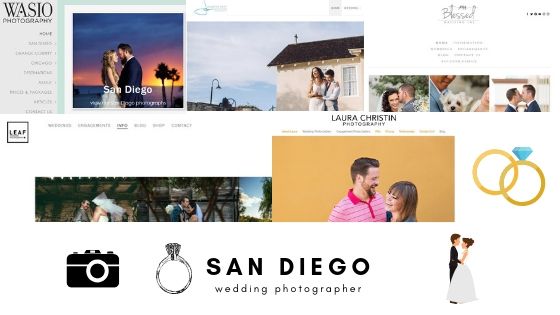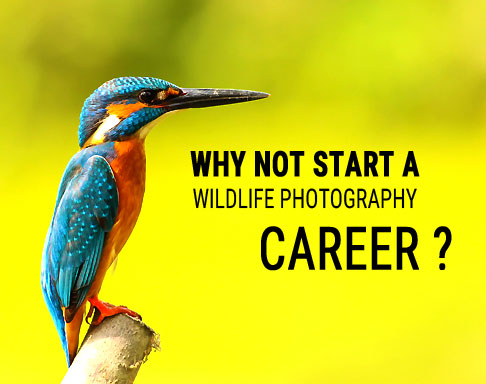Wildlife photography is a captivating and challenging art that requires a deep understanding of both photography techniques and the natural world. Whether you are an aspiring wildlife photographer or a seasoned professional looking to refine your skills, a wealth of knowledge can be gained from the best books on the subject. In this article, we will explore 15 must-read books on wildlife photography that cover a range of topics, from technical aspects of photography to insights into the behavior of wild animals.
“The Art of Wildlife Photography” by Joe McDonald and Mary Ann McDonald:
This comprehensive guide by the McDonalds is a treasure trove of information for both beginners and advanced photographers. It covers everything from equipment selection and composition to ethical considerations in wildlife photography.
“Wildlife Photography: From Snapshots to Great Shots” by Laurie S. Excell:
Laurie Excell’s book is part of the popular “From Snapshots to Great Shots” series, offering practical tips and step-by-step guidance for capturing stunning wildlife images. The book is filled with beautiful examples and provides exercises to reinforce learning.
“The Complete Guide to Nature Photography” by Sean Arbabi:
While not exclusively focused on wildlife, Sean Arbabi’s guide is a comprehensive resource for nature photographers. It covers essential techniques, equipment, and composition principles that are equally applicable to wildlife photography.
“Photographing Wildlife and Nature” by Heather Angel:
Heather Angel, a renowned wildlife photographer, shares her expertise in this well-illustrated book. It delves into the technical aspects of photography, including exposure, lighting, and composition, while also discussing the behavior of different animal species.
“The Wildlife Photographer of the Year Portfolio” by Rosamund Kidman Cox:
Compiled by the Natural History Museum, this book features stunning images from the Wildlife Photographer of the Year competition. It serves as both inspiration and a learning tool, showcasing diverse styles and approaches to wildlife photography.
“National Geographic Complete Photography” by National Geographic:
National Geographic’s guide is a comprehensive resource covering various genres of photography, including wildlife. With insights from National Geographic photographers, it provides tips on storytelling through images and explores the art and science of photography.
“The Photographer’s Guide to Posing: Techniques to Flatter Everyone” by Lindsay Adler:
While not directly focused on wildlife, Lindsay Adler’s guide to posing is invaluable for understanding how to capture the essence and personality of animals through their posture and behavior. The principles can be applied to wildlife photography with thoughtful adaptation.
“The Wildlife Photography Workshop” by Ross Hoddinott and Ben Hall:
This workshop-style book takes you through practical exercises to improve your wildlife photography skills. It covers topics such as fieldcraft, composition, and post-processing, offering a hands-on approach to learning.
“Extraordinary Everyday Photography” by Brenda Tharp and Jed Manwaring:
Brenda Tharp and Jed Manwaring’s book encourages photographers to find beauty in everyday scenes. While not specifically about wildlife, the principles of seeing and capturing unique moments are applicable to wildlife photography.
“Creative Nature & Outdoor Photography” by Brenda Tharp:
Brenda Tharp’s book focuses on unleashing creativity in nature photography. It explores ways to see and capture the natural world in innovative and expressive ways, making it a valuable resource for wildlife photographers looking to infuse creativity into their work.
“Wildlife Photography: Proven Techniques for Capturing Stunning Digital Images” by Jim Zuckerman:
Jim Zuckerman’s book is a practical guide that covers essential techniques for capturing captivating wildlife images. It includes tips on composition, lighting, and post-processing, making it a valuable resource for photographers of all skill levels.
“The Moment It Clicks: Photography Secrets from One of the World’s Top Shooters” by Joe McNally:
Joe McNally, a renowned photographer, shares insights into the art of capturing the perfect moment. While not exclusively focused on wildlife, the principles discussed in the book are applicable to various genres, including wildlife photography.
“Photographing Birds: Art and Techniques” by Markus Varesvuo:
Markus Varesvuo’s book is a comprehensive guide specifically focused on photographing birds. It covers technical aspects such as equipment and settings, as well as insights into bird behavior, helping photographers capture compelling avian images.
“The Photographer’s Guide to the Yorkshire Dales” by Jonny Sutton:
While location-specific, this book serves as an example of how understanding the environment is crucial in wildlife photography. It provides insights into photographing the diverse wildlife found in the Yorkshire Dales and offers valuable lessons for photographers working in different regions.
“Wildlife Photography: On Safari with Your DSLR: Equipment, Techniques, Workflow” by Uwe Skrzypczak:
Uwe Skrzypczak’s book provides a practical guide for photographers venturing into the wild on safari. It covers essential equipment, techniques for photographing various wildlife scenarios, and workflow considerations to ensure you capture the best moments during your safari adventures.
“The Wildlife Photography Field Guide” by Joe McDonald:
Another gem by Joe McDonald, this field guide is a compact, easy-to-carry reference for wildlife photographers. It covers topics like animal behavior, tracking, and fieldcraft, offering quick tips and insights for photographers in the field.
“Digital Wildlife Photography” by Chris Weston:
Chris Weston’s book is a comprehensive guide to digital wildlife photography, covering topics like camera settings, composition, and post-processing. It also delves into the ethical considerations of wildlife photography, emphasizing the importance of respecting and protecting the subjects.
“Light on the Earth: Two Decades of Winning Images from the Wildlife Photographer of the Year” by David Attenborough:
Curated by the renowned naturalist David Attenborough, this book features winning images from the Wildlife Photographer of the Year competition. It not only showcases breathtaking photographs but also includes narratives about the photographers and the stories behind their captivating shots.
“The New Art of Photographing Nature: An Updated Guide to Composing Stunning Images of Animals, Nature, and Landscapes” by Art Wolfe and Martha Hill:
Art Wolfe, a celebrated nature photographer, collaborates with Martha Hill to update their classic guide on photographing nature. The book covers composition, lighting, and techniques for capturing the essence of the natural world, making it a valuable resource for wildlife photographers.
“The National Geographic Guide to Landscape and Wildlife Photography” by Tim Laman and Gordon Wiltsie:
National Geographic photographers Tim Laman and Gordon Wiltsie collaborate to provide insights into capturing stunning landscapes and wildlife. The book covers both technical aspects of photography and the storytelling elements that make for compelling images.
“The Essence of Wildlife Photography: The Essential Guide for Digital Camera Users” by Britta Jaschinski:
Britta Jaschinski’s book is a comprehensive guide for digital camera users venturing into wildlife photography. It emphasizes the importance of understanding animal behavior and ethics, ensuring that photographers create impactful images while respecting their subjects.
“Digital Wildlife Photography” by David Tipling:
David Tipling’s guide focuses on the digital aspects of wildlife photography, including camera settings, post-processing techniques, and utilizing digital tools. It’s a practical resource for photographers looking to make the most of modern technology in their wildlife photography pursuits.
“The Photographer’s Guide to Posing: Techniques to Flatter Everyone” by Lindsay Adler:
While not specific to wildlife, Lindsay Adler’s guide to posing is a valuable resource for understanding body language and movement. This knowledge can be applied to wildlife photography, helping photographers anticipate and capture the dynamic behaviors of animals.
Conclusion – Best Books on Wildlife Photography
These 15 books cover a wide range of topics within wildlife photography, from technical aspects to artistic expressions. Whether you’re a beginner seeking foundational knowledge or an experienced photographer looking to refine your skills, these books offer valuable insights, tips, and inspiration. Remember, mastering wildlife photography is a continuous journey of learning and observation, and these books are excellent companions on that exciting path.







